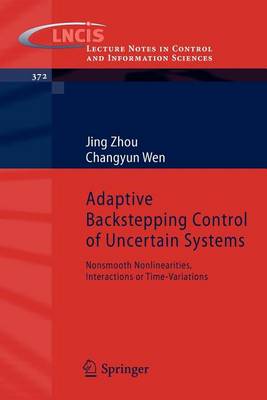Lecture Notes in Control and Information Sciences
2 primary works
Book 313
Switched and Impulsive Systems
by Zhengguo Li, Yengchai Soh, and Changyun Wen
In this volume the important concept of switched and impulsive control is discussed, with a wide field of applications in the analysis and control of complex systems. This monograph provides the reader with a comprehensive coverage of switched and impulsive systems, including new original work with various applications such as switched server systems, scalable video coding systems, chaotic based secure communication, or quality of service on the internet. Switched and Impulsive Systems can be used as a reference or a text for a course at graduate level.
Book 372
Adaptive Backstepping Control of Uncertain Systems
by Jing Zhou and Changyun Wen
Nonsmooth nonlinearities such as dead-zone, backlash, hysteresis and satu- tion are common in industrial control systems, such as mechanical, hydraulic, biomedical, piezoelectric, and physical systems. Such nonlinearities are usually poorlyknownandmayvarywithtime,andthey oftenlimitsystemperformance.

